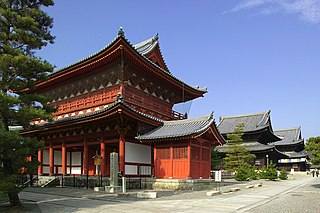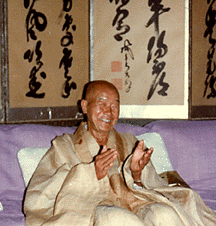| Part of a series on |
| Zen Buddhism |
|---|
 |
Persons Chán in China
Zen in Japan Seon in Korea Zen in the USA Category: Zen Buddhists |
Awakening |
Practice |
Related schools |
The Ōtōkan lineage(応灯関、應燈關) is a lineage of the Rinzai school of Zen (a form of Japanese Buddhism). It was founded by Nanpo Jomyo, who received the dharma in China in 1265 and returned to Japan in 1267.

A lineage in Buddhism is a line of transmission of the Buddhist teaching that is "theoretically traced back to the Buddha himself." The acknowledgement of the transmission can be oral, or certified in documents. Several branches of Buddhism, including Chan and Tibetan Buddhism maintain records of their historical teachers. These records serve as a validation for the living exponents of the tradition.
The Rinzai school is one of three sects of Zen in Japanese Buddhism.

Zen is a school of Mahayana Buddhism that originated in China during the Tang dynasty as the Chan school (Chánzong) of Chinese Buddhism and later developed into various schools. Chán Buddhism was also influenced by Taoist philosophy, especially Neo-Daoist thought. From China, Chán spread south to Vietnam and became Vietnamese Thiền, northeast to Korea to become Seon Buddhism, and east to Japan, becoming Japanese Zen.
Contents
It is centered at the temple complexes of Myōshin-ji (founded by Kanzan Egen, the third patriarch) and Daitoku-ji (founded by Daito Kokushi, the second patriarch) in Kyoto, and sometimes referred to as the "Myōshin-ji lineage" accordingly. It now consists of two main lines, the Inzan line and the Takujū line, which date to circa 1800.

Myōshin-ji is a temple complex in Kyoto, Japan, and head temple of the associated branch of Rinzai Zen Buddhism. The Myōshin-ji school is by far the largest school in Rinzai Zen, approximately as big as the other thirteen branches combined: it contains within it about 3,400 temples throughout Japan, together with a handful overseas, of the approximately six thousand total Rinzai temples, and also has nineteen associated monasteries, of the total of forty monasteries and one nunnery.

Daitoku-ji is a Buddhist temple, one of fourteen autonomous branches of the Rinzai school of Japanese Zen. It is located in Kita-ku, Kyoto, Japan. The "mountain name" (sangō) by which it is known is Ryūhōzan (龍宝山). The Daitoku-ji temple complex today covers more than 23 hectares.

Kyoto, officially Kyoto City, is the capital city of Kyoto Prefecture, located in the Kansai region of Japan. It is best known in Japanese history for being the former Imperial capital of Japan for more than one thousand years, as well as a major part of the Kyoto-Osaka-Kobe metropolitan area.






